In 2024, managing the workforce effectively is essential for call centers to run smoothly, provide great customer service, and keep employees happy. The right workforce management (WFM) software can assist with scheduling, forecasting, and monitoring in real-time, making sure there are enough agents to handle the call volume. Here are 12 of the top and most popular call center WFM software options available in 2024, each with unique features to meet different operational needs.
What is Call Center Workforce Management Software?
Call center workforce management (WFM) software is a specialized tool designed to help manage and optimize the workforce in a call center environment. This software assists in various critical tasks such as forecasting call volumes, scheduling staff, monitoring real-time adherence to schedules, and analyzing performance metrics. The main goal of WFM software is to ensure that the right number of agents with the appropriate skills are available at the right times to meet customer demand, thus improving efficiency, reducing operational costs, and enhancing customer satisfaction.
Why Workforce management (WFM) is crucial in call centers:
Here we guided you with some of the reasons.
- Optimized Staffing: WFM helps ensure that the right number of agents are scheduled to meet call volumes, preventing both under-staffing and over-staffing. This optimization leads to better resource utilization and cost savings.
- Improved Customer Service: By matching staffing levels with demand, WFM reduces wait times and ensures that customers receive timely assistance, enhancing overall satisfaction and experience.
- Enhanced Employee Satisfaction: Proper scheduling and workload distribution prevent burnout and overwork among agents, leading to higher job satisfaction and retention rates.
- Data-Driven Decisions: WFM software provides detailed analytics and performance metrics, enabling managers to make informed decisions about staffing, training, and other operational aspects.
- Regulatory Compliance: In some regions, there are regulations regarding work hours and breaks. WFM helps ensure that call centers comply with these regulations, avoiding potential legal issues and penalties.
Benefits of using Workforce Management in Call Centers:
- Increased Efficiency: WFM helps optimize staffing levels, ensuring that the right number of agents are scheduled to handle customer inquiries. This reduces idle time and overstaffing, leading to more efficient use of resources.
- Improved Customer Satisfaction: By accurately forecasting call volumes and scheduling appropriately, WFM minimizes wait times and ensures that customers receive prompt and effective service, enhancing their overall experience.
- Cost Savings: Efficient scheduling reduces overtime costs and prevents overstaffing, which can lead to unnecessary labor expenses. WFM tools help align staffing costs with actual demand, improving the bottom line.
- Enhanced Employee Engagement: WFM can help balance workloads and provide agents with predictable schedules, which can reduce burnout and improve job satisfaction. This leads to higher morale and lower turnover rates.
- Better Decision Making: WFM software provides valuable insights through analytics and reporting, allowing managers to make data-driven decisions about staffing, training, and process improvements.
- Compliance and Fairness: WFM tools can ensure adherence to labor laws and company policies regarding work hours, breaks, and overtime, promoting a fair and compliant workplace.
- Scalability and Flexibility: WFM systems can easily adapt to changing business needs, such as seasonal fluctuations in call volume or the introduction of new products, ensuring that staffing levels remain aligned with business demands.
some best practices for managing workforce in call centers

Implementing best practices in call center workforce management (WFM) can significantly improve efficiency, customer satisfaction, and employee morale. Here are some key best practices:
- Accurate Forecasting: Use past data to predict call volumes accurately. This helps in planning the right number of agents to handle calls, reducing wait times and avoiding overstaffing.
- Effective Scheduling: Create schedules that match agent availability with the expected call volume. Use WFM tools to automate this process and accommodate changes or absences.
- Real-Time Monitoring: Keep track of key metrics like call volume and agent availability in real-time. This allows for quick adjustments to maintain service levels.
- Skill-Based Routing: Direct customer calls to agents with the right skills and knowledge. This improves the chances of resolving issues on the first call and enhances customer satisfaction.
- Performance Metrics and Feedback: Regularly monitor agent performance using metrics such as call handling time and customer satisfaction. Provide feedback and training to help agents improve.
- Employee Engagement and Flexibility: Involve agents in the scheduling process by considering their availability and preferences. This helps increase job satisfaction and reduces turnover rates.
Best Call Center Workforce Management Software
Here we provide some of the Call Center Workforce Management Software lists.
1. Assembled WFM
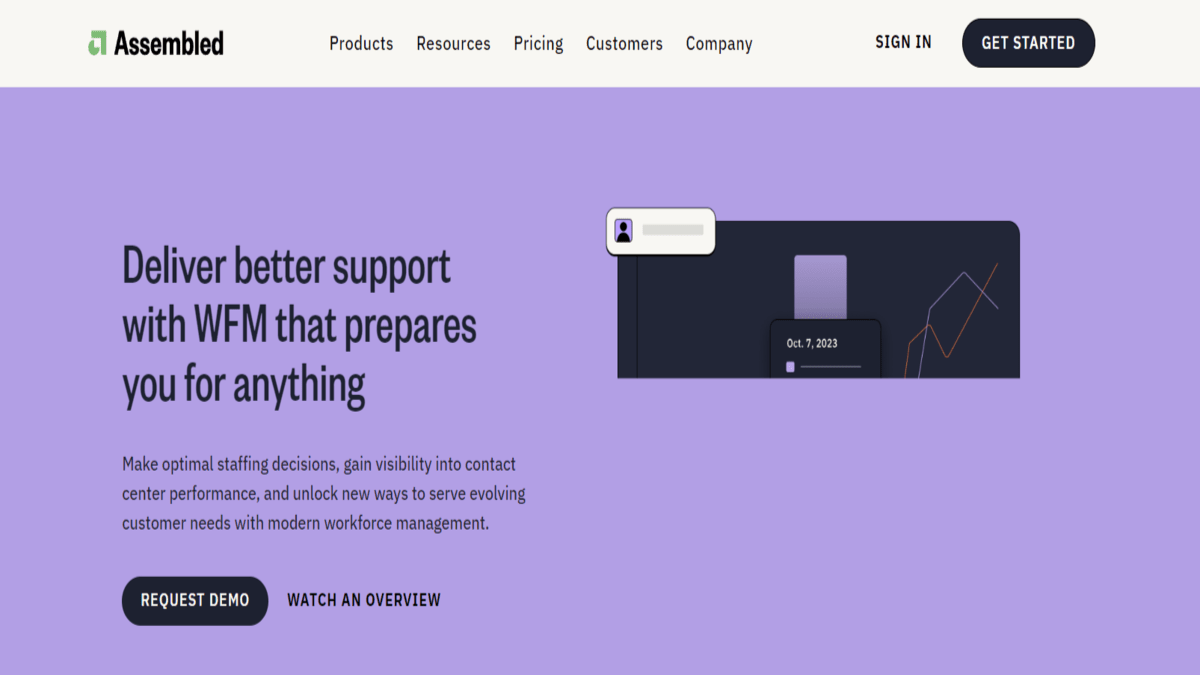
Assembled WFM is a tool for managing call center operations. It helps with scheduling agents, forecasting call volumes, and tracking performance. The platform provides insights to improve efficiency and customer service. It also supports real-time monitoring and reporting. Overall, Assembled WFM aims to streamline call center tasks and enhance productivity.
Key Features of Assembled WFM
- Scheduling: Easily create and manage shift schedules for agents to ensure optimal coverage.
- Forecasting: Predict future call volumes and staffing needs based on historical data and trends.
- Real-Time Tracking: Monitor live call center activity and make adjustments as needed.
- Reporting: Generate detailed reports on performance metrics, agent productivity, and more.
- Integration: Connects with other call center tools and systems for seamless operations.
Benefits of Assembled WFM
- Real-Time Monitoring: The tool provides live updates on call center operations, allowing for quick adjustments and better management.
- Enhanced Productivity: By automating routine tasks and providing actionable insights, it helps improve overall efficiency and performance.
- Improved Customer Service: Better scheduling and forecasting lead to reduced wait times and more effective handling of customer inquiries.
2. Verint
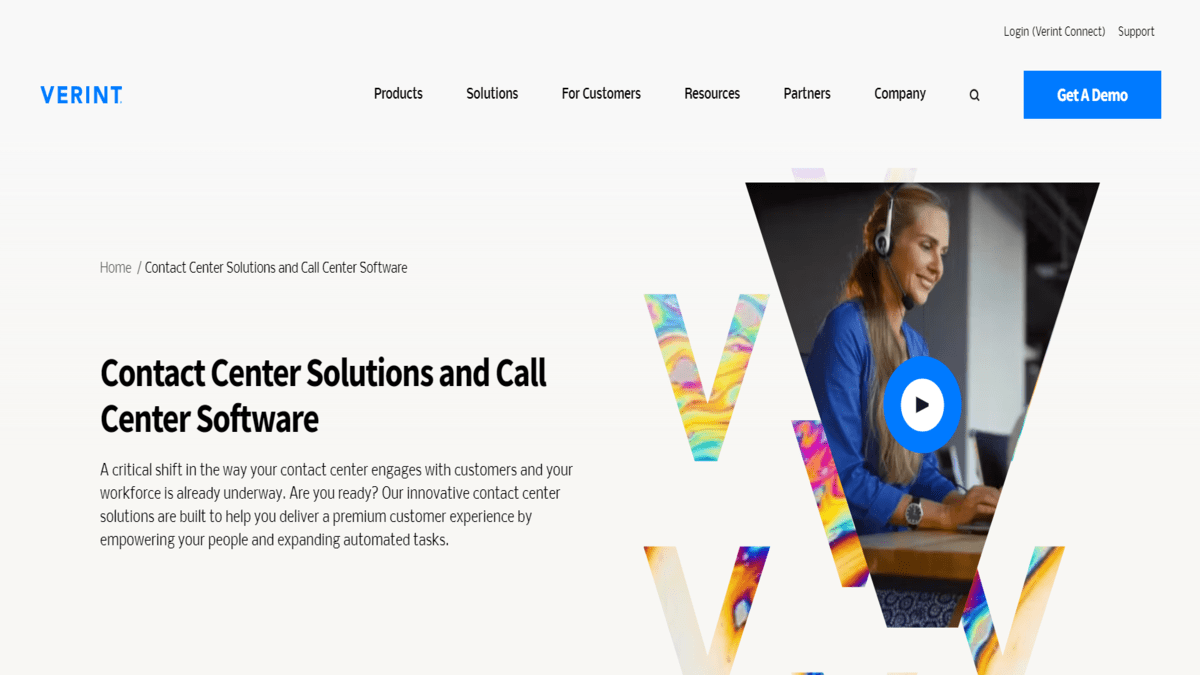
Verint offers a robust WFM suite with powerful analytics and reporting tools. It helps call centers forecast demand accurately and schedule staff accordingly. Verint’s real-time dashboards allow supervisors to monitor key performance indicators (KPIs) and adjust staffing levels as needed. For instance, a healthcare provider improved patient satisfaction by reducing wait times, using Verint’s real-time monitoring and adaptive scheduling.
Key Features of Verint
- Workforce Optimization: Tools for scheduling, forecasting, and performance management to enhance workforce efficiency.
- Customer Engagement: Features for managing interactions across different channels, including voice, email, and chat.
- Analytics and Reporting: Provides in-depth analysis of customer interactions and agent performance with customizable reports.
- Quality Monitoring: Tools to evaluate and improve the quality of customer interactions through recording and evaluation.
Benefits of Verint
- Enhanced Customer Experience: Verint helps improve customer service by providing insights into interactions and trends, leading to better handling of customer inquiries.
- Increased Efficiency: It automates many routine tasks, streamlining operations and freeing up time for agents to focus on more complex issues.
- Better Workforce Management: The platform assists with scheduling and forecasting, ensuring that call centers are properly staffed to handle varying call volumes.
- Actionable Insights: With detailed analytics and reporting, Verint helps identify areas for improvement and track performance effectively.
3. Observe.AI
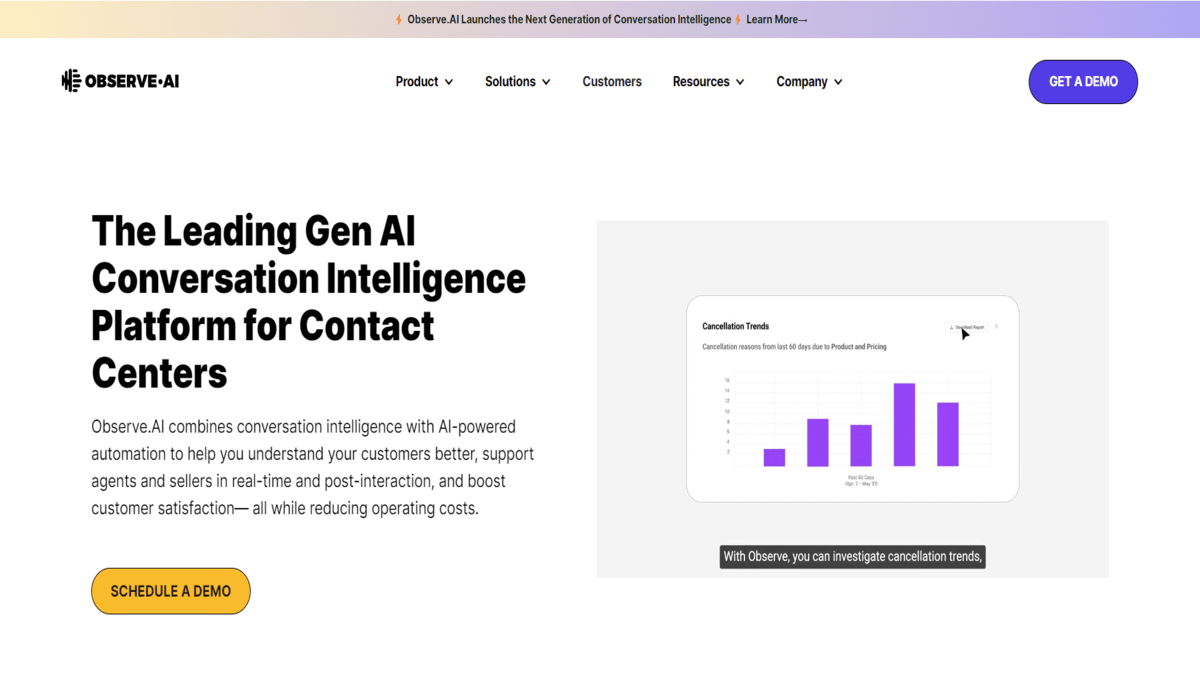
Observe.AI is a cloud-based platform that uses AI to improve call center performance. It analyzes customer calls to provide insights and feedback. The tool helps track agent performance and ensures compliance with regulations. By using speech analytics, it helps understand conversations better. Overall, Observe.AI aims to enhance customer service and operational efficiency.
Key Features of Observe.AI
- Call Analytics: Analyzes customer interactions to provide detailed feedback on agent performance and call quality.
- Speech Recognition: Uses AI to transcribe and understand spoken conversations for better analysis.
- Performance Monitoring: Tracks and measures key performance metrics of agents and call center operations.
- Real-Time Coaching: Provides real-time feedback and suggestions to agents during calls to improve their performance.
Benefits of Observe.AI
- Enhanced Customer Experience: By understanding customer interactions better, the tool helps in delivering more personalized and effective service.
- Efficient Quality Assurance: Automates the process of monitoring and evaluating calls, saving time and ensuring consistent quality.
- Data-Driven Insights: Provides actionable insights from call data, helping to identify trends and areas for improvement.
- Reduced Training Time: Offers training and performance improvement tools that help new agents get up to speed faster.
4. Calabrio WFM
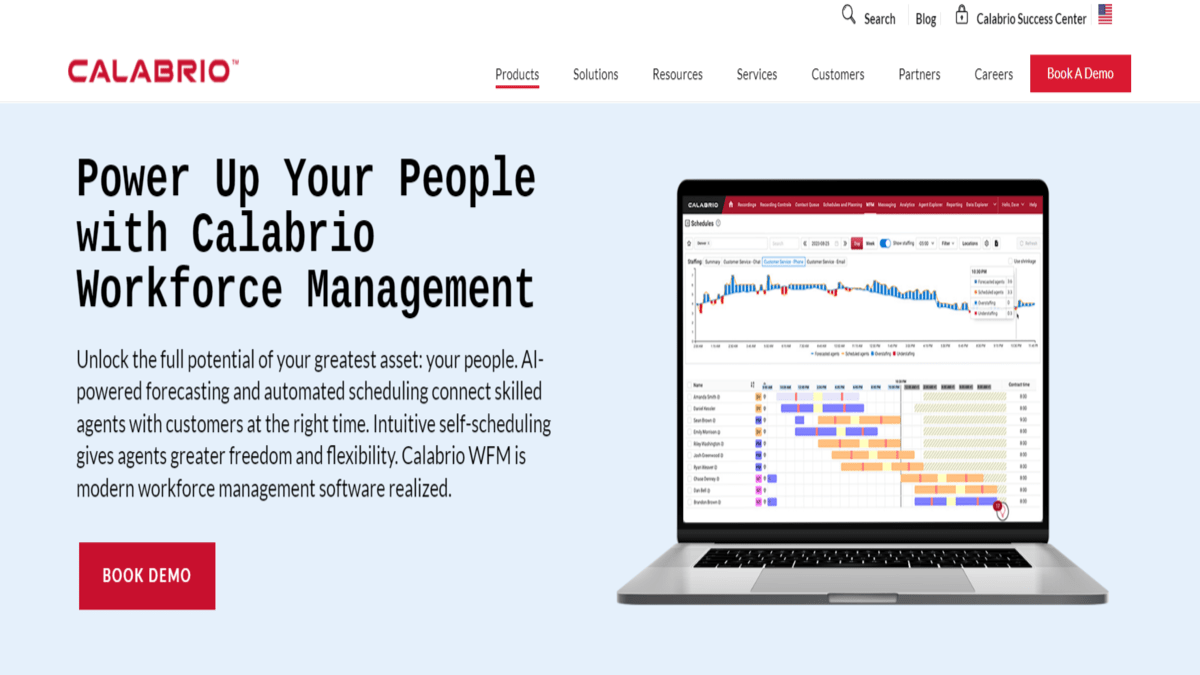
Calabrio WFM is a workforce management software designed to optimize scheduling and improve efficiency in call centers. It offers features like forecasting, real-time monitoring, and performance analytics. This tool helps businesses balance workloads, reduce costs, and enhance customer service by ensuring the right staff are in the right place at the right time. Calabrio WFM is known for its user-friendly interface and integration capabilities.
Key Features of Calabrio
- Accurate Forecasting: Uses historical data to predict call volumes and staffing needs.
- Real-Time Monitoring: Allows for adjustments to be made quickly to handle unexpected changes in call volume.
- Performance Analytics: Provides insights into employee performance, helping to identify areas for improvement and training.
- Automated Scheduling: Simplifies the creation of efficient schedules, taking into account employee availability and business needs.
Benefits of Calabrio
- Increased Operational Efficiency: Automated scheduling features streamline the scheduling process, accommodating employee availability and business requirements. This leads to more efficient use of resources and reduces administrative workload.
- Better Employee Performance Management: The software offers detailed analytics on employee performance, identifying training needs and areas for improvement. This helps in optimizing staff productivity and enhancing service quality.
- Cost Savings: By optimizing workforce management and reducing inefficiencies, Calabrio WFM helps call centers lower operational costs while maintaining or improving service levels.
5. AmplifAI
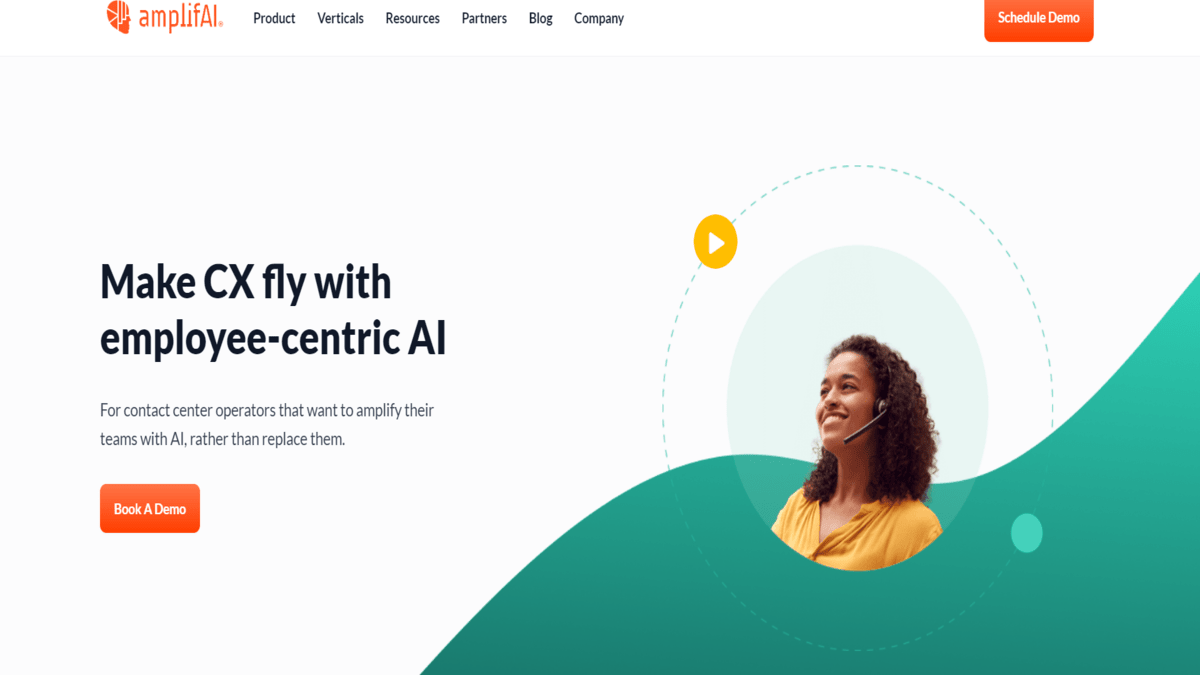
AmplifAI is a tool that uses AI to help call centers perform better. It provides insights to improve agent performance and analyzes calls to find trends. The platform tracks important metrics and automates some tasks. Overall, AmplifAI aims to boost efficiency and enhance customer service.
Key Features of AmplifAI
- Performance Analytics: Provides detailed insights into agent performance and customer interactions, helping to identify strengths and areas for improvement.
- Coaching and Training: Offers tools for personalized coaching and training based on performance data, helping agents improve their skills.
- Real-Time Feedback: Delivers immediate feedback and suggestions to agents during calls, enabling them to adjust and improve in real-time.
- Customizable Dashboards: Allows users to create dashboards that focus on key metrics and performance indicators relevant to their needs.
Benefits of AmplifAI
- Improved Agent Performance: AmplifAI provides actionable insights and personalized coaching, helping agents improve their skills and performance.
- Enhanced Customer Service: By analyzing interactions, it helps identify ways to better meet customer needs and enhance their overall experience.
- Increased Efficiency: Automates performance management and training, freeing up time for managers and reducing administrative tasks.
- Better Decision-Making: Offers detailed analytics and reports to help make informed decisions and drive operational improvements.
6. Call Center Studio
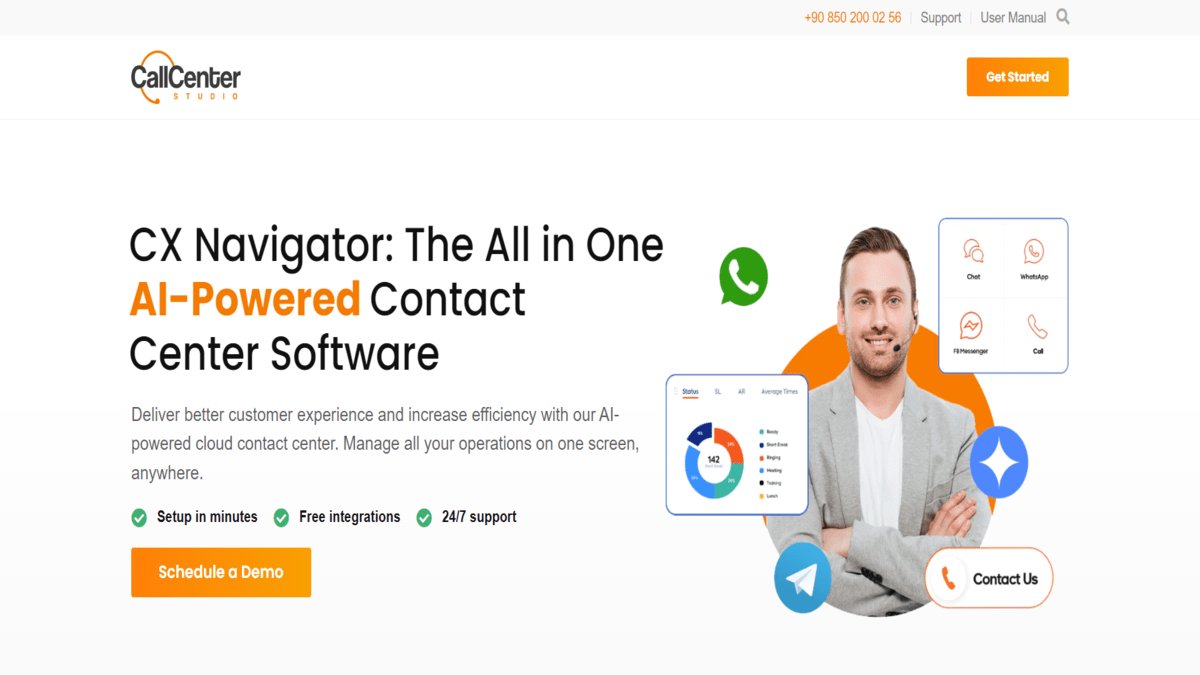
Call Center Studio is a tool that helps manage call center operations. It makes it easier to handle and route calls, schedule agent shifts, and track performance. The platform also provides insights and reports to improve efficiency. It’s designed to simplify day-to-day tasks and enhance overall productivity.
Key Features of Call Center Studio
- Advanced Reporting: Provides detailed reports and analytics on call center performance, agent productivity, and customer interactions.
- Real-Time Monitoring: Allows managers to monitor live calls and interactions, ensuring quality control and immediate issue resolution.
- Customizable Dashboards: Enables users to create dashboards that highlight key metrics and performance indicators tailored to their needs.
- Integration Support: Integrates with other call center tools and systems, ensuring a cohesive and streamlined operation.
Benefits of Call Center Studio
- Improved Efficiency: Automates routine tasks and workflows, which helps agents focus more on customer service and less on administrative work.
- Enhanced Customer Experience: Provides tools to ensure consistent and high-quality customer interactions, improving overall satisfaction.
- Data-Driven Insights: Offers analytics and reporting features to help you understand performance and make informed decisions.
- Flexible Integration: Works well with other systems and tools, allowing for seamless integration and better overall performance.
7. Five9 WFM
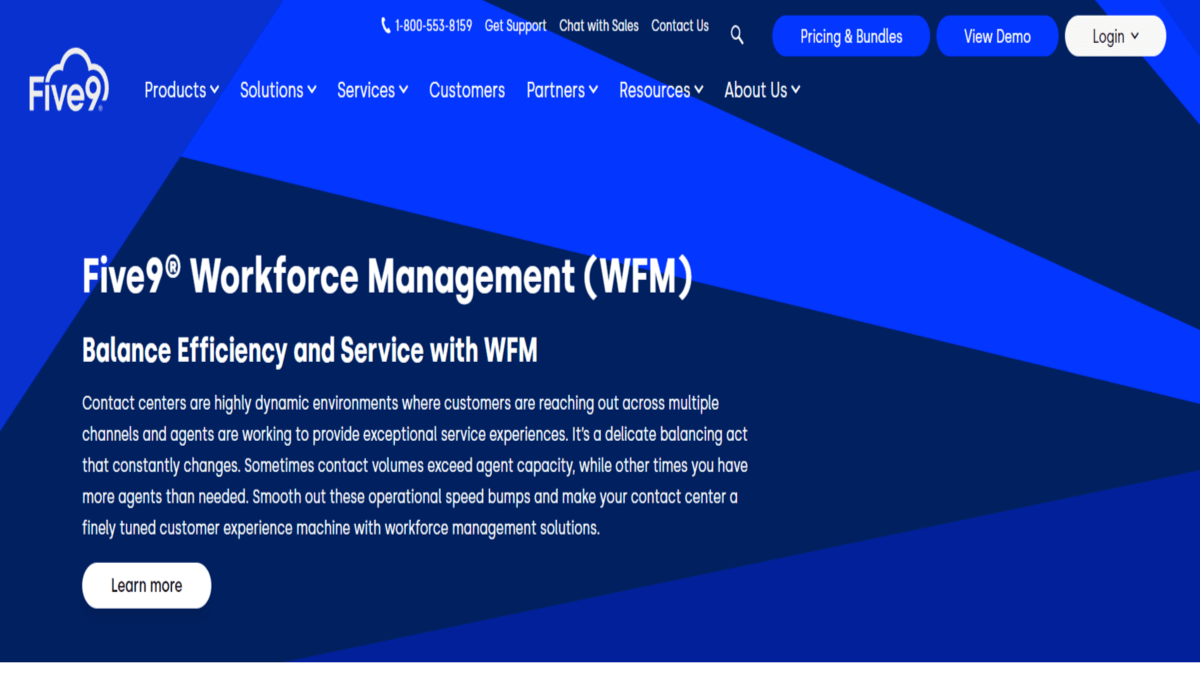
Five9 WFM offers cloud-based workforce management with a focus on ease of use and integration. It includes features such as multi-skill scheduling, real-time adherence monitoring, and detailed reporting. An insurance call center improved their customer satisfaction scores by 25% by implementing Five9’s WFM tools to better align staffing with call volumes.
Key Features of Five9 WFM
- Forecasting Tools: Helps predict future call volumes and staffing requirements to ensure optimal coverage.
- Performance Monitoring: Features for tracking and evaluating agent performance, helping to identify areas for improvement.
- Real-Time Monitoring: Provides live data on call volumes and agent activity, allowing for immediate adjustments and response.
- Comprehensive Reporting: Offers detailed reports and analytics on various aspects of call center operations, supporting data-driven decisions.
Benefits of Five9 WFM
- Efficient Scheduling: Five9 WFM helps create accurate and efficient staff schedules, ensuring you have the right number of agents at the right times.
- Improved Forecasting: It provides tools to predict call volumes and staffing needs, helping you plan better and avoid over or under-staffing.
- Enhanced Agent Performance: Offers features for monitoring and managing agent performance, leading to better service quality and productivity.
- Real-Time Adjustments: Allows for quick adjustments to schedules and staffing based on real-time data and changes in call volume.
8. Ameyo
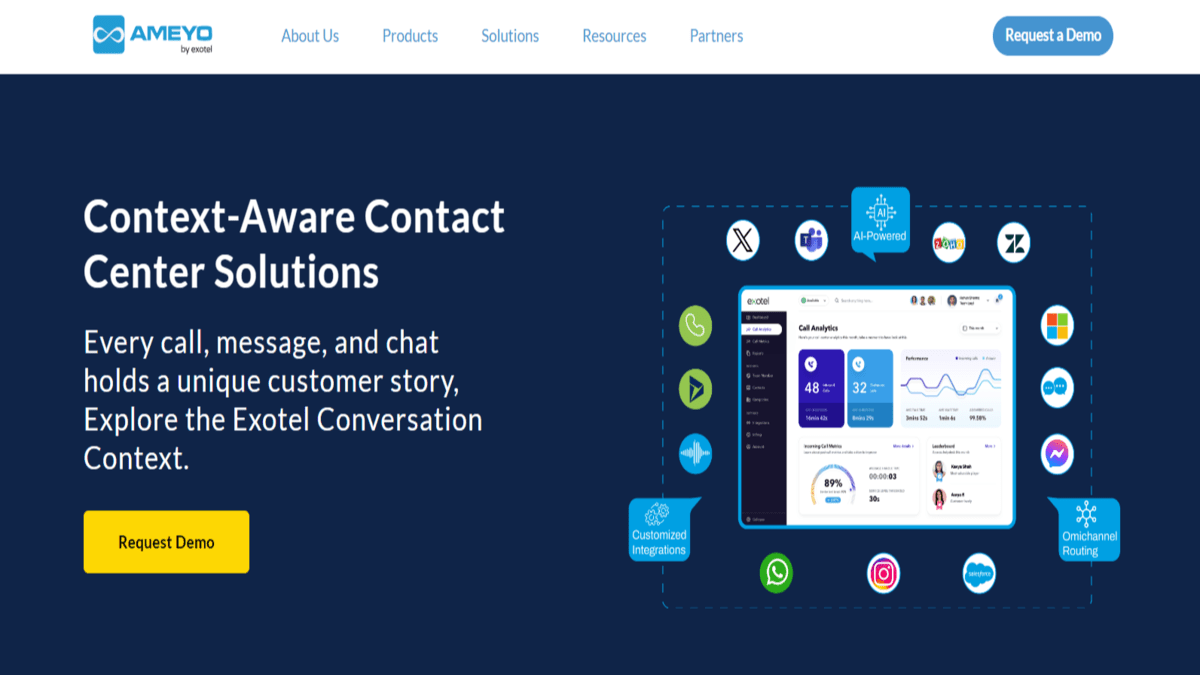
Ameyo is customer experience and contact center software. It offers tools for managing customer interactions across various channels, including voice, email, and chat. The platform includes features for call management, workforce optimization, and analytics. Ameyo aims to improve customer service and streamline contact center operations. It helps businesses enhance efficiency and deliver a better customer experience.
Key Features of Ameyo
- Omnichannel Support: Manages customer interactions across various channels like phone, email, chat, and social media from a single platform.
- Advanced Analytics: Provides detailed reports and dashboards to track performance, analyze trends, and make data-driven decisions.
- Automated Workflows: Automates routine tasks and processes to streamline operations and improve efficiency.
- Customizable Interface: Allows you to tailor the platform to fit your specific needs and preferences, ensuring a better user experience.
Benefits of Ameyo
- Increased Efficiency: Automates many call center processes, reducing manual work and allowing agents to focus on more complex tasks.
- Better Performance Tracking: Offers detailed analytics to monitor agent performance and call center operations, helping to identify and address issues quickly.
- Flexible Integration: Works well with other systems and tools, making it easier to integrate into your existing call center setup.
- Scalable Solutions: Adapts to the size and needs of your call center, whether you’re a small team or a large operation.
9. Talkdesk WFM
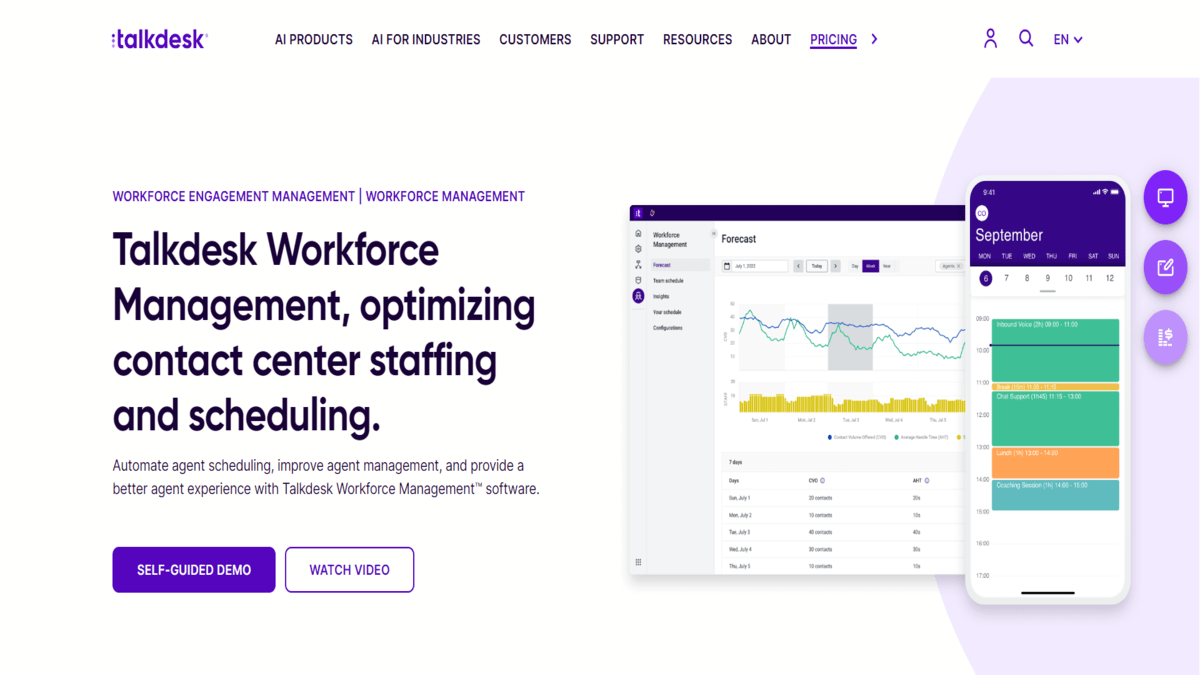
Talkdesk WFM is designed to simplify workforce management with intuitive scheduling and real-time analytics. It integrates seamlessly with Talkdesk’s contact center platform, providing a unified view of customer interactions and agent performance. A tech support center saw a 20% improvement in first-contact resolution by using Talkdesk WFM to align agent skills with customer needs.
Key Features of Talkdesk WFM
- Forecasting Tools: Predicts future call volumes and staffing needs to ensure optimal coverage.
- Performance Monitoring: Tracks agent performance with real-time data and detailed reports to identify areas for improvement.
- Real-Time Monitoring: Provides live updates on call center activity, allowing for quick adjustments and better management.
- Comprehensive Reporting: Delivers detailed reports and analytics on various aspects of call center performance, supporting data-driven decisions.
Benefits of Talkdesk WFM
- Improved Agent Performance: Provides tools to monitor and manage agent performance, helping to boost productivity and service quality.
- Real-Time Adjustments: Allows for immediate changes to schedules and staffing based on live data, ensuring you can respond quickly to shifts in call volume.
- Better Forecasting: Uses data to predict future call patterns and staffing requirements, helping to avoid over or under-staffing.
- Enhanced Decision-Making: Offers detailed analytics and reports to support informed decisions and optimize call center operations.
10. Alvaria WFM
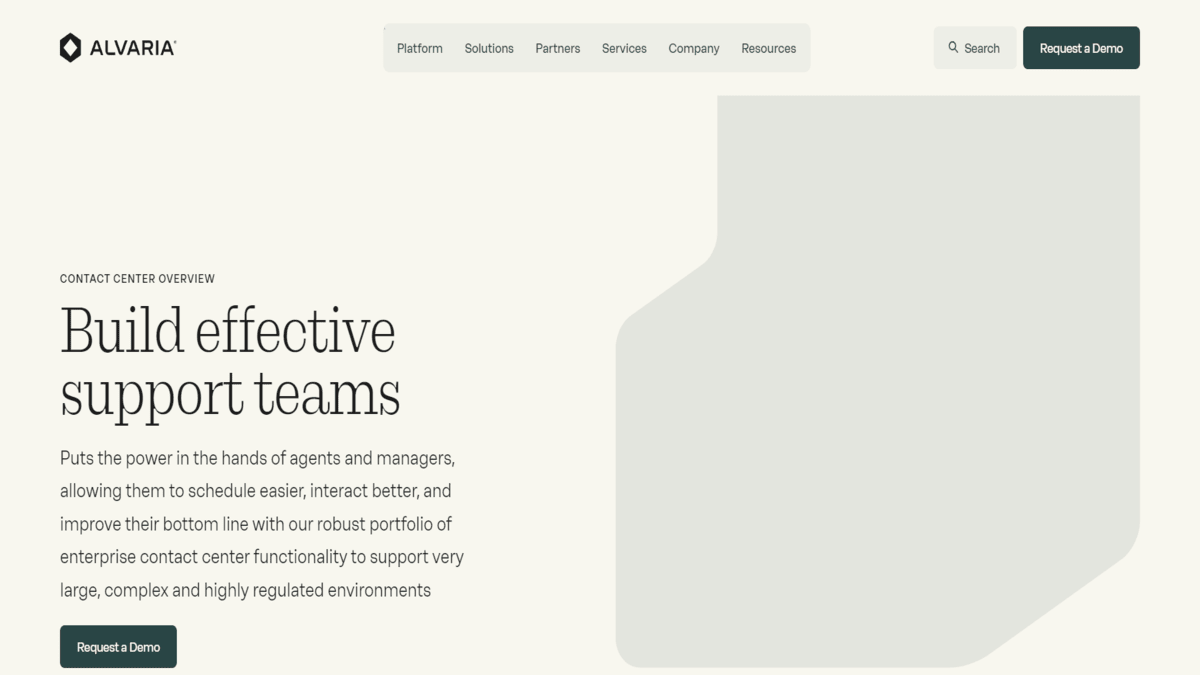
Alvaria WFM (Workforce Management) is a solution designed to optimize call center operations. It provides tools for accurate forecasting, efficient scheduling, and real-time performance monitoring. Alvaria WFM helps manage agent schedules, track key metrics, and improve overall efficiency. The platform aims to enhance customer service by ensuring that the right number of agents are available at the right times.
Key Features of Alvaria WFM
- Automated Scheduling: Generates schedules automatically based on historical data and future forecasts to ensure adequate staffing.
- Forecasting and Planning: Analyzes past call data to predict future volumes and plan staffing needs accurately.
- Performance Tracking: Monitors agent performance with real-time data and reports, helping to identify areas for improvement.
- Real-Time Monitoring: Provides live updates on call center activity, allowing for quick adjustments to schedules and resources.
Benefits of Alvaria WFM
- Enhanced Forecasting: Uses historical data to predict future call volumes, helping to plan staffing levels and avoid under or over-staffing.
- Improved Agent Productivity: Monitors agent performance and provides tools to manage workloads, leading to better efficiency and service quality.
- Real-Time Adjustments: Allows you to make immediate changes to schedules and staffing based on current call center activity.
- Data-Driven Insights: Offers detailed analytics and reports to support better decision-making and optimize call center operations.
11. Playvox WFM
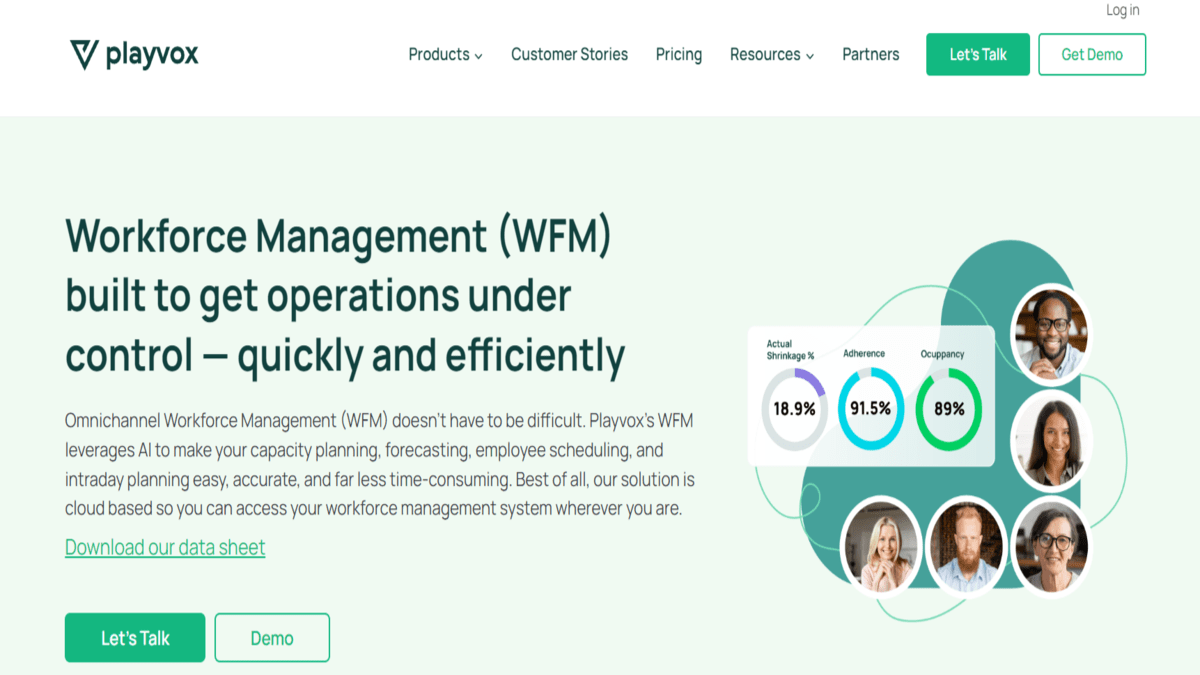
Playvox WFM is a cloud-based solution that emphasizes simplicity and ease of use. It includes features like forecasting, scheduling, and real-time adherence monitoring. Playvox’s gamification features help engage agents and improve their performance. A retail call center saw a significant reduction in absenteeism after implementing Playvox’s gamification and engagement tools.
Key Features of Playvox WFM
- Forecasting Tools: Uses past call data to predict future call volumes and staffing requirements.
- Performance Tracking: Monitors and evaluates agent performance with real-time data and comprehensive reports.
- Real-Time Adjustments: Provides the ability to adjust schedules and resources instantly based on current conditions.
- Detailed Reporting: Offers in-depth analytics and reports on various aspects of call center operations for better management and planning.
Benefits of Playvox WFM
- Efficient Scheduling: Playvox WFM helps create effective schedules based on historical data and forecasts, ensuring you have the right number of agents at all times.
- Accurate Forecasting: Analyzes past call data to predict future call volumes and staffing needs, reducing the risk of over or under-staffing.
- Enhanced Agent Performance: Tracks agent performance and provides insights to improve productivity and service quality.
- Real-Time Flexibility: Allows for real-time adjustments to schedules and staffing based on current call volumes and agent availability.
12. Nextiva WFM
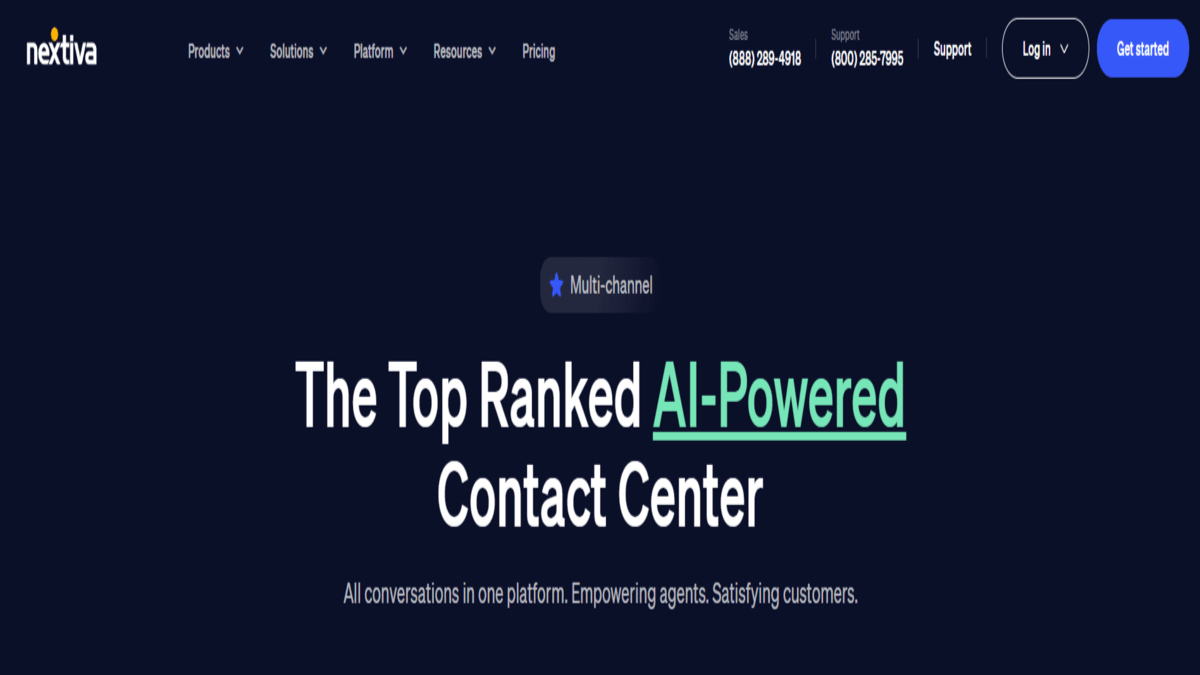
Nextiva WFM (Workforce Management) is a tool for managing call center operations. It helps predict call volumes, so you can schedule the right number of agents. The tool tracks performance in real-time and generates reports on key metrics. This makes it easier to improve efficiency and customer service. It’s designed to streamline workforce management and ensure smooth operations.
Key Fetures of Nextiva WFM
- Forecasting: Analyzes past call data to predict future call volumes and staffing needs accurately.
- Performance Tracking: Monitors agent performance with real-time data and detailed reports to identify areas for improvement.
- Real-Time Adjustments: Allows for immediate adjustments to schedules and staffing based on current call center activity.
- Comprehensive Reporting: Delivers in-depth analytics and reports on call center operations, helping managers make informed decisions.
Benefits of Nextiva WFM
- Optimized Scheduling: Nextiva WFM helps you create efficient schedules that match call volume forecasts, ensuring you have enough agents at peak times.
- Accurate Forecasting: Uses historical data to predict future call volumes, helping you avoid staffing shortages or surpluses.
- Improved Productivity: Tracks agent performance and provides tools to enhance productivity and service quality.
- Real-Time Monitoring: Offers live updates on call center activity, allowing you to make quick adjustments to schedules and resources.
Choose the Correct Workforce Management tools for Call Center
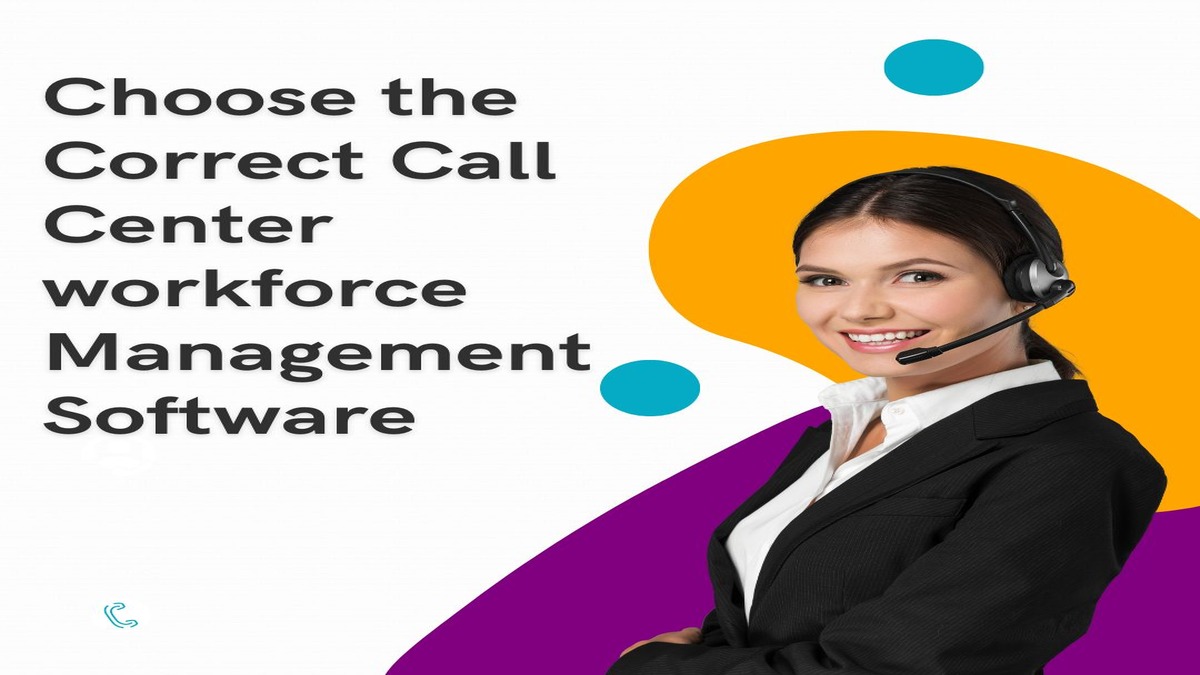
Choosing the right workforce management (WFM) tools for your call center involves considering several key factors to ensure the tool meets your specific needs. Here’s how to choose the right WFM tool:
- Identify Your Needs: Identify your call center’s specific needs, including scheduling, forecasting, real-time monitoring, and reporting, while considering team size and call volume.
- Scalability: Choose a WFM tool that can grow with your business. It should be able to handle an increase in agents, call volume, and the addition of new features as your call center expands.
- Ease of Use: The tool should have an intuitive interface that is easy for both managers and agents to use. Complex systems can lead to errors and reduce productivity.
- Integration Capabilities: Ensure the WFM tool integrates smoothly with your CRM, telephony, and communication systems for seamless operations and data consistency.
- Real-Time Analytics and Reporting: The tool should provide strong analytics and reporting, with customizable dashboards and detailed reports to monitor performance and forecast accurately.
- Automation Features: Automation can save time and reduce errors. Choose a WFM tool that automates scheduling, forecasting, and alerts for adherence to schedules and other key metrics.
- Support and Training: Consider the level of customer support and training provided by the vendor. Good support can be invaluable, especially during the implementation phase and when issues arise.
- Cost and ROI: Evaluate the cost of the WFM tool, including initial setup, licensing fees, and ongoing maintenance. Consider the return on investment (ROI) in terms of improved efficiency, reduced labor costs, and enhanced customer satisfaction.
- Trial Period or Demo: Many vendors offer a trial period or demo. Use this opportunity to test the tool in your environment and assess its functionality and ease of use.
- User Feedback and Reviews: Check reviews and testimonials to gauge the tool’s reliability, customer service, and performance.
Conclusion
Choosing the right WFM software for a call center depends on various factors, including the size of the operation, the complexity of the staffing needs, and the specific features required. The options listed above represent some of the best and most popular WFM software available in 2024, each offering unique strengths to help call centers optimize their workforce management. By carefully evaluating these solutions, businesses can enhance their operational efficiency, improve customer service, and achieve their organizational goals.
FAQs on Call Center Workforce Management Software
1. What is Call Center Workforce Management (WFM) Software?
Ans. Call Center WFM software helps manage and optimize call center operations by providing tools for scheduling, forecasting, real-time monitoring, and performance tracking. It ensures that the right number of agents are available at the right times to handle customer interactions effectively.
2. Why is Workforce Management Important in Call Centers?
Ans. Workforce management is crucial for call centers as it helps balance staffing levels with call volume, improves agent productivity, reduces operational costs, and enhances customer satisfaction by ensuring that service levels are consistently met.
3. What Are the Key Features to Look for in WFM Software?
Ans. Key features include automated scheduling, accurate forecasting, real-time monitoring, performance tracking, and detailed reporting. Integration capabilities with existing systems and user-friendly interfaces are also important.
4. How Does WFM Software Help with Scheduling?
Ans. WFM software automates the scheduling process by analyzing historical call data and predicting future call volumes. It creates optimized schedules to ensure adequate staffing levels and reduces the likelihood of over or under-staffing.
5. What is Forecasting in WFM Software?
Ans. Forecasting involves predicting future call volumes based on historical data and trends. WFM software uses this information to help plan staffing needs and make informed decisions about scheduling and resource allocation.
6. Can WFM Software Integrate with Other Systems?
Ans. Yes, most WFM software can integrate with existing systems like CRM, telephony, and communication platforms. This integration helps maintain data consistency and streamlines operations across different tools.
7. How Does WFM Software Improve Agent Performance?
Ans. WFM software tracks agent performance metrics, such as call handling times and customer satisfaction scores. It provides insights and reports that help identify areas for improvement and support targeted training and development.
8. What Are the Benefits of Real-Time Monitoring in WFM?
Ans. Real-time monitoring allows managers to view live data on call center activity, such as current call volume and agent availability. This helps make immediate adjustments to schedules and resources to address any issues promptly.
9. How Can WFM Software Help Reduce Operational Costs?
Ans. By optimizing scheduling and forecasting, WFM software helps ensure that staffing levels match call volume, reducing the costs associated with over-staffing or under-staffing. It also improves agent productivity and efficiency, leading to cost savings.
10. What Are Some Popular WFM Software Options for 2024?
Ans. Some of the top WFM software options in 2024 include Verint, Calabrio ONE, Playvox, Five9 WFM, and Talkdesk WFM. These solutions are known for their comprehensive features, ease of use, and ability to enhance call center operations.
Read More: Top 10 Best Workforce Management Tools in 2024

